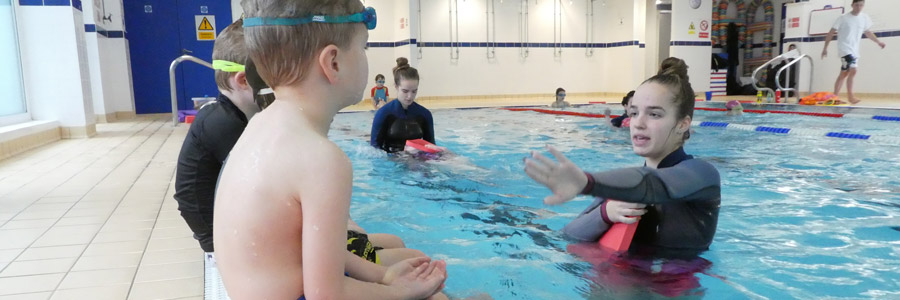
17 Mar Is school swimming enough?
I have experience of school swimming lessons on three levels – as a child, as a school assistant and as the lead swimming teacher running lessons at a primary school. In short I can tell you that no, the vast majority of school swimming lessons are not enough to ensure a child can learn to swim to a good standard.
When I took part in school swimming lessons as a child I was probably 6 or 7 and I had been having lessons outside of school for about two years. My school was lucky enough to have its own outdoor pool, so during the summer months we swam once a week.
I was a confident swimmer and to be honest, the swimming lessons at school were one of the aspects of my primary education that I enjoyed the most.
Being in the water was fun but I don’t feel that I learnt much from the lessons, my class teacher would lie on the edge of the pool and demonstrate breaststroke, arms and legs like a wind- up toy. Her demonstrations were incorrect, but we were asked to copy – which I did, only to return to the correct way I had been taught later. The lessons were no more than 20 minutes long and when we were finished, we were instructed to run around the school field in our swimming costumes to ‘dry off’.
My next experience of school swimming lessons was dramatically different. I had volunteered to help a local primary school during their swimming lessons, which were held at the leisure centre. I was tasked with supporting a child with additional needs, but soon realised that there was far more required of me than that alone. Most of the children in this year 3 class had never been in a swimming pool before, they were not at all prepared and one boy only had his father’s swimming trunks to wear. Sadly, only two children out of the thirty were strong enough to be split into a group, the rest – who couldn’t manage to walk through the water without holding the side – were left clutching the bar shivering with nerves. The lesson consisted of attempts to encourage them to lift their feet off of the floor and try and get their face wet. For all of the effort it required to get the coach to the leisure centre, get changed and be poolside ready for the lesson they were only in the water for 15 minutes. They repeated this for 6 weeks and by the end of that time, despite their enthusiasm, only an extra two were moved into the ‘swimmer’ group.
Fast forward a few more years and I am currently the lead teacher running swimming lessons for a primary school with its own pool. This school runs lessons all year round with half the school swimming half a term at a time – the results are massively different. From a class of 30, it is rare to have 3 non-swimmers by the time they are in year three. It is by no means an easy task, and the children put in a large amount of hard work to try and reach their goals. Some, if not most of the children have lessons outside of school and this is reflected in their performance during the lesson. They require far less feedback, have a clearer understanding of the technique, and most end up swimming at a higher standard than the children in the year or two above them. However, not all are ready to be future Olympians, those that don’t have lessons outside of school only get 6 or 7 lessons during that half term to make huge improvements to their current ability, which thankfully they do achieve by the end of term. Unfortunately, when their lessons stop they don’t go swimming to practise their new skills, most, if not all of their hard-earned progress is lost and the next half term we have to start again.
In a recent article in ‘Swimming Times’ a magazine put together by The Institute of Swimming and Swim England, Steve Parry writes that ‘Swimming is just as much a part of the national curriculum as English or Maths yet, astonishingly, almost a third of year six pupils leave primary school without basic swimming and water safety skills.’
Not all schools have their own pool with two fully qualified experienced teachers, and it’s not the easiest job to teach a class of mixed ability swimmers with the range including a child terrified to get their face wet, and a child who swims and competes at the local swimming club, all within half an hour.
When learning to drive, young adults who practise with their parents are likely to pass faster than those who wait until their next driving lesson to get behind the wheel. Learning to read would be a much harder challenge if children didn’t take the books home to practise with their Mum or Dad. It’s exactly the same for swimming lessons. Skills that are not practised, are not retained. Therefore, in my opinion, school swimming lessons alone are not enough to ensure your child can swim and understand how to stay safe in water.
Interested in giving your child more pool time – email us office@neilbaileyswimming.co.uk or check out our website www.neilbaileyswimming.co.uk


